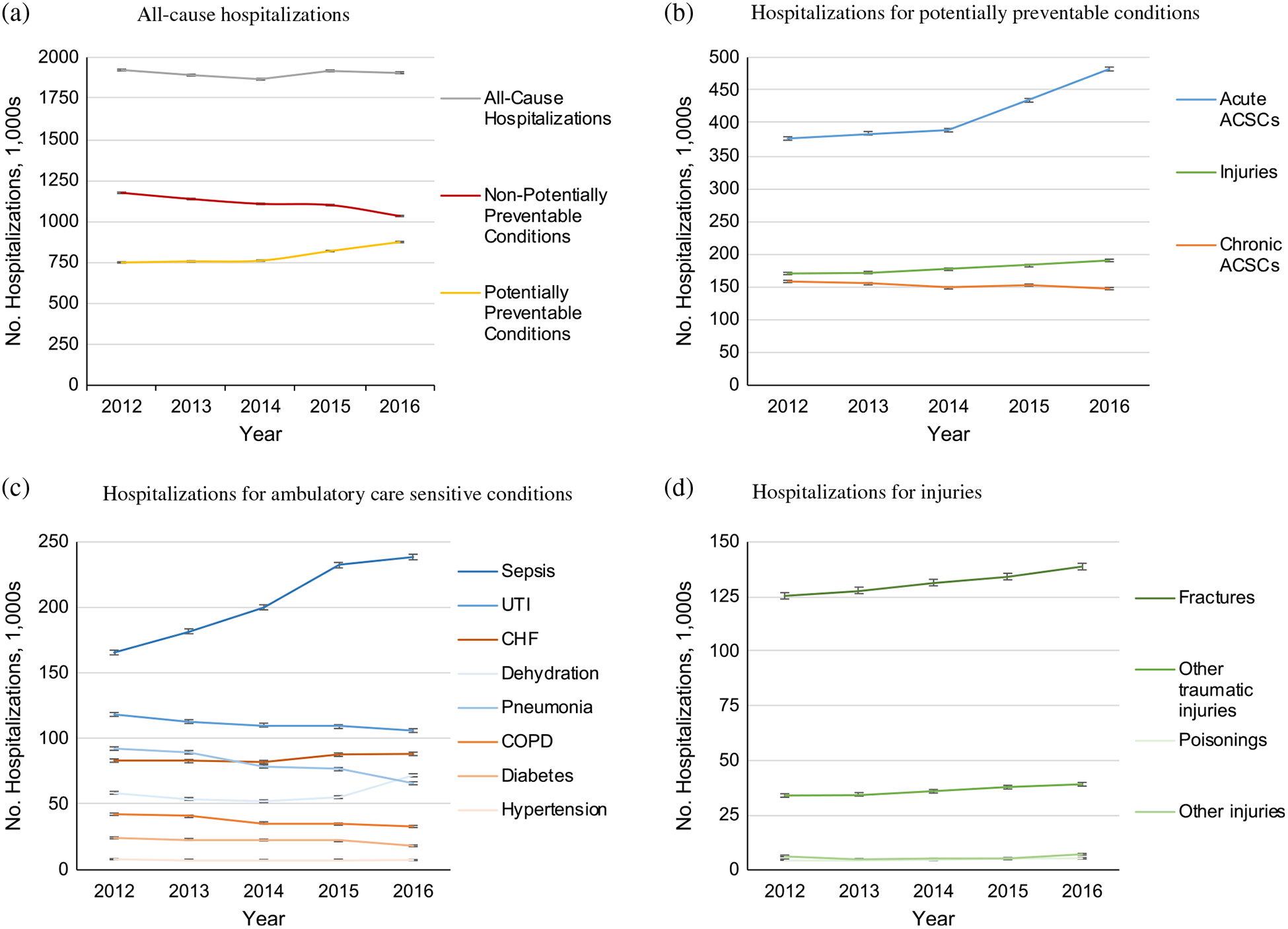Figure 1.

Trends in hospitalizations of older adults with diagnosed dementia, 2012 to 2016. (a) All-cause hospitalizations. (b) Hospitalizations for potentially preventable conditions. (c) Hospitalizations for ambulatory care sensitive conditions (ACSCs). (d) Hospitalizations for injuries. Note: Potentially preventable conditions include injuries, acute ACSCs, and chronic ACSCs. Non-potentially preventable conditions include all other conditions. Acute ACSCs (shown in blue) include sepsis, urinary tract infection, pneumonia, and dehydration. Chronic ACSCs (shown in red) include congestive heart failure, chronic obstructive pulmonary disease, diabetes, and hypertension. Injuries (shown in green) include fractures, other traumatic injuries, poisonings, and other injuries. All data are weighted to be nationally representative. Error bars indicate 95% confidence intervals. Panel A: P = .04 for all-cause hospitalizations, P < .001 for potentially preventable conditions, P < .001 for non-potentially preventable conditions. Panel (B): P = <.001 for acute ACSC; P = .84 for injuries and P < .001 for chronic ACSCs. Panel (C): All trends statistically significant (P < .001), except for hypertension (P = .06). Panel (D): P < .001 for fractures, P < .001 for other traumatic injuries, P = .004 for poisonings, and P < .001 for other injuries.
